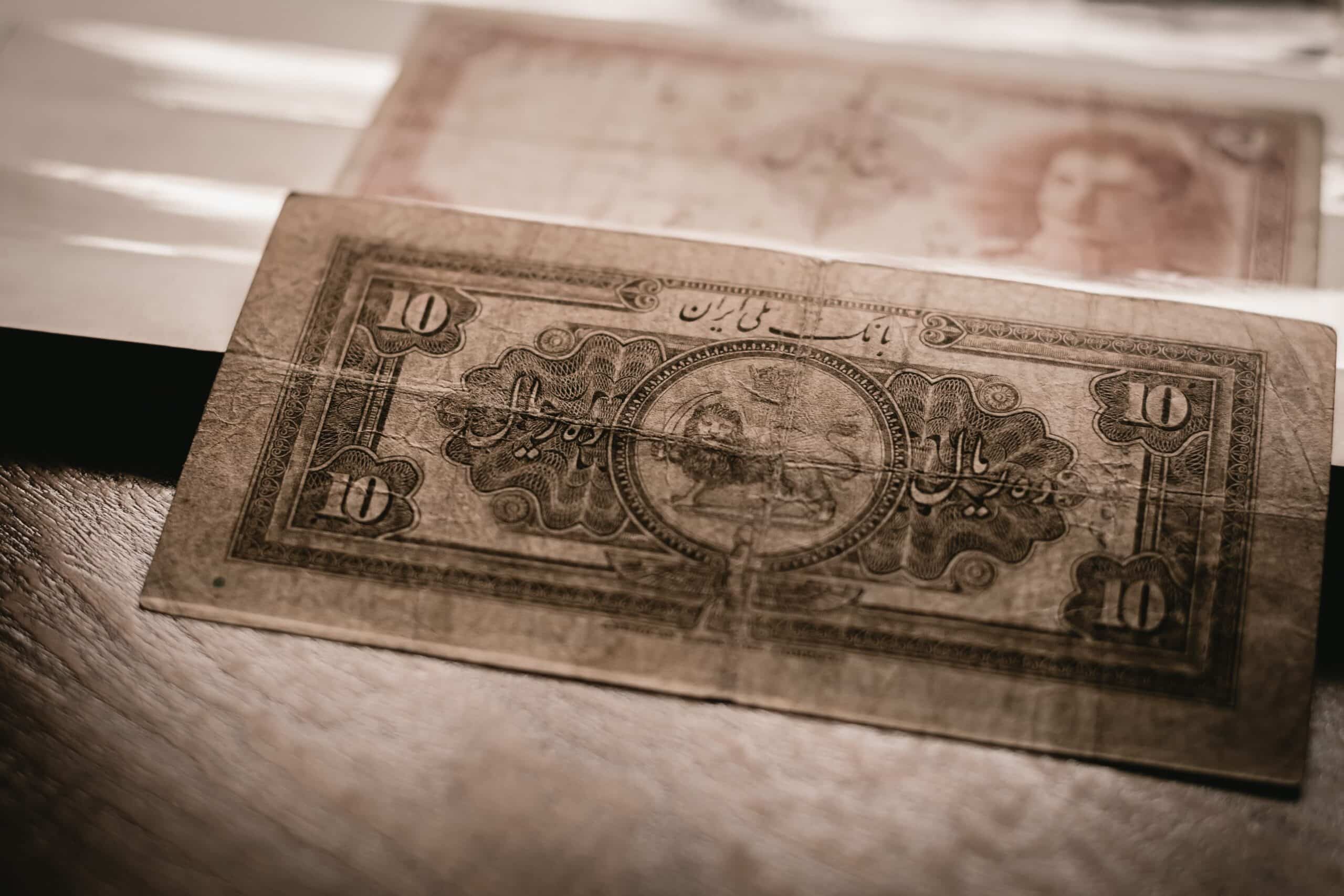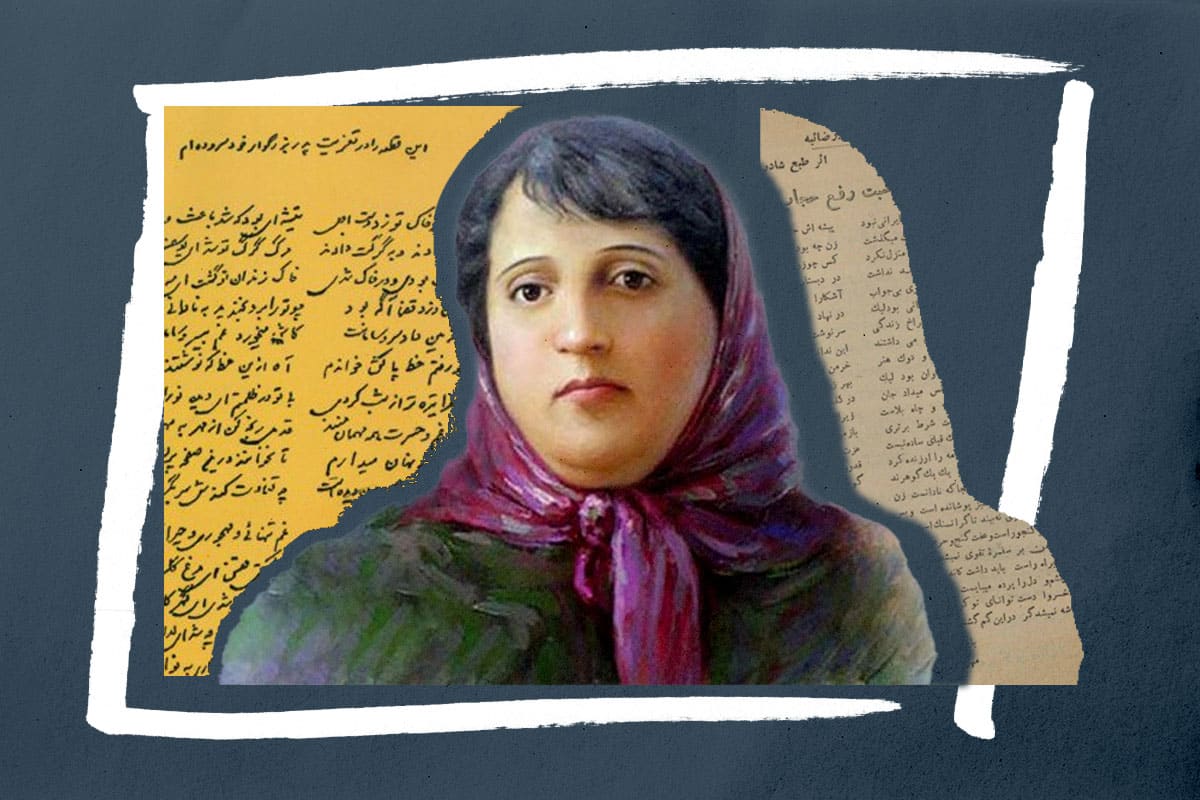The founding and growth of banking in Iran
The first bank in Iran, the Bank-e Shahanshahi-ye Iran [Imperial Bank of Persia], or “Imperial Bank” was established in 1889 with a concession granted by Nasser al-Din Shah Qajar to Baron Julius De Reuter. [1] Three years later, the Iran-Russia Loan Bank was established in Tehran and several northern cities in Iran. [2]
Foreign-controlled banks dominated Iran’s financial sector until the 1920s. Sepah Bank, originally called the Pahlavi Army Bank, was the first Iranian bank to be established on May 4, 1925, with the funds from the Army Retirement Fund. The bank, which was established to manage and finance the army’s finances, quickly expanded its activities to major cities. In 1926, it changed its name, its charter and its mandate, to meet the needs of Iran’s trade and other economic activities. Sepah Bank became Iran’s largest bank for more than 9 years. [3]
Bank Melli (The National Bank of Iran) also started operating on September 8, 1928 with an initial capital of 20 million Rials. The bank’s operations initially involved accepting visual and long-term deposits, accepting domestic and foreign business documents, and providing loans and credits. The Falahati branch of Bank Melli was separated from Bank Melli on July 16, 1933 and started its operation under the name of Keshavarzi Bank (Bank of Agriculture). The bank’s main mission was to facilitate the growth of the agricultural sector and to improve the living standards of the villagers. [4]
Iran Mortgage Bank (Bank Rahni) was established in 1938 with the collaboration of the Ministry of Finance and the National Bank of Iran, as a specialized bank for housing and construction. [5] In the late 1950s, the Mortgage Bank revolutionized mortgage deposits and bank loans with the establishment of the Housing Savings Fund. In the early 1970s, due to the increase in the country’s oil revenues, the bank grew fast and expanded its activities rapidly. [6]
Maskan Bank, which is still operating in Iran, stood on the shoulders of the Mortgage Bank. It was established in 1979 in accordance with the Banking Laws and as a result of the merger of Iran’s Mortgage Bank and other lending banks such as Iranian Construction Investment Company, Cyrus Savings and Mortgage Companies, Ekbatan, Pasargad of Tehran, and Saving Companies of Mashhad, Tabriz, Shiraz, Isfahan, Ahvaz, Gilan, Hamedan, Kermanshah, Mazandaran, Gorgan, Semnan and Abadan.[7]
The National Bank of Iran (Bank Melli) played a crucial role in the development of banking services in the 1940s, and until the end of World War II was the only state-owned bank to make significant contributions to the formation of public and non-governmental corporations and organizations. It continued its banking operations after the 1940s, handling banking operations such as lending and accepting deposits and domestic and foreign business documents. The National Bank continued its most important function, namely, printing money and regulating monetary policies for the country from 1941 to 1960. However, in early 1960, these two exclusive functions were granted to the newly established Bank Markazi (Central Bank of Iran).[8]
Despite the development of the National Bank and Sepah Bank, as well as foreign banks in Iran, there was not a single private bank with solely Iranian capital until after World War II. This was despite the fact that there was no legal prohibition to establishing a private bank. Under the circumstances, banking activity across the country was monopolized by a few institutions. Until the first development plan of 1948, the need for additional credit institutions was not felt. In June 1949, the government created a plan to fund private production units. Subsequently, the Industrial Credit Bank of Iran was established as the first private bank and as a cooperative in January 1950 and started its operation a year later. The establishment of this bank paved the way for creating new private banks. By the middle of 1953, several other private banks, like Omran Bank, Saderat Bank, Insurance Bank (Bimeh) and Pars, were established.[9]
The activities of private banks, monetary and credit institutions in the country were aimed at raising funds and allocating capital for lending to would-be clients as well as providing all sorts of financial and banking services, except checking accounts for the general public. The transformation of the Iranian banking system continued operating with a different business model and varying shareholders.
Types of banks and banking services
Mohammad Rabizadeh, a senior bank management expert at Iran’s Banking Institute and a member of the Board of Directors of Saderat Bank, in his blog, has divided the Iranian banking system before the Islamic revolution into five main categories:
- State-owned banks: A group of banks entirely capitalized and financed by the government. These include Sepah Bank, National, Cooperative, Agriculture, Mortgage, Industrial Credit, Iranian Insurance, Workers’ Welfare and Iranian Agricultural Development.
- Private banks: Banks whose entire capital was paid and financed by investors in the country. These include Iranian Commercial Banks, Pars, Saderat of Iran, Omran, Iranshahr, Labor, Credit, Cooperatives, Shahriar, Iranian Industries and Construction.
- Joint private banks: Banks capitalized partly by Iranian investors and partly by foreign investors within the monetary and banking legal framework of the country. These include Bank of Tehran, Iranian Credit, Iranian and Dutch Foreign Trade, Iran & Britain, Iran & Middle East, Iranians, Iran & Japan International, Iranian Industrial & Mining Development, Iranian Development & Investment, Dariush, Arab & International.
- Regional development banks: Banks that operated as regional banks, named after the region in which they operated and capitalized by domestic entrepreneurs. These included the Azerbaijan Development Bank, the Caspian Development Bank and the Khuzestan Development Bank.
- Foreign Government banks: These include Russian and Iran Bank, fully capitalized by the Russian government.[10]
In terms of the type of banking operations, banks were divided into two categories: commercial banks and specialized banks. The main activities of commercial banks were limited to monetary intermediation (lending and borrowing), with the following credit tools:
- Loans: Cash payments against acceptable bank guarantees and mainly immovable loans in one or more periods, as well as the gradual recovery of interest and principal (in installments) or at once.
- Line of Credit: Providing cash in the form of credit applicable to a special line of credit against the debtor’s account up to a certain amount in respect to guaranteed promissory notes, mortgages or collectively being withdrawn through the issuance of checks by customers.
- Overdraft: Debt of current accounts of customers up to a certain amount and solely to the credit of the customer without any collateral or against promissory notes and insufficient guarantees.
- Cash and Credit: Paying off customers’ debts and obligations arising from business notes and securities without checking the liability and legitimacy of transactions by discounting them in order to resolve the customer current financial issue.[11]
In a paper entitled “The Evolution of Banking in Iran,” [12] which has been published on the website of the Institute of Humanities and Cultural Studies, Ebrahim Foyuzat wrote that until 1978, banks and banking consisted of about 8,300 bank branches and booths, with over 70,000 employees, the majority of which were under the auspices of the Saderat and Maaden Banks (the Export and Mines Banks) of Iran. Foyuzat writes that the establishment of banks and the banking system until 1978 depended on the prevailing economic and social conditions.
He added: “In essence, the growth and decline of banking in Iran were based on the economic and social conditions of the country.” [13] For example, in 1953 at the time of the nationalization of the oil industry and Mossadegh’s non-oil-based economy, only five private and development banks were established each year to help expand domestic industries and production. In the following period, which coincided with the dominance of foreign capital over the Iranian economy and the creation of joint capital, banks were encouraged to create hybrid banks in order to evade taxes and government regulations. During 1958–1959, twelve multinational banks (domestic, foreign and government) were established, the most important and specialized of which was the Bank of Industry and Mine Development of Iran, the most important multinational corporation in Iran. By late 1979 this bank had invested in more than 155 industrial and mining projects, transportation, agro-industry, complex factories of poison production, fibers, commercial and industrial services, glass production, lamp manufacturing, tourism, hotel establishment, leather production, the manufacture of ball bearings, etc. [14]
Ebrahim Foyuzat also examined the banking system in the 1960s, writing: “This is the decade of reform in the governmental system—reforms that brought about changes in government, in the social structure and further expanded the banking system. During this period, economic and political instability replaced regulation, bank lending and investments were regulated, and the existence of the Central Bank helped to create economic balance.”
Banking activity in the 1970s, according to Foyuzat, was affected by the sharp rise in oil prices, especially in 1974. During this decade, a new phase emerged in the banking industry due to the rise in oil prices and the expansion of the banking network. Specialty banks and regional banks were the two distinct groups of banks that were formed and developed during this decade. The emergence of these banks was a sign of the expansion of investment banking. Such a trend made it possible to make money in the remotest parts of the country.
The impact of the Revolution on banks and banking four months after the 1979 revolution, the situation in the country was unstable and the actions of the revolutionaries had darkened the outlook for the economy. At that time people and investors went to banks to withdraw their savings, and many of the well-established private banks were on the verge of bankruptcy.
On June 8, 1979, Iranian banks were nationalized.
The nationalization of banks was approved by the Provisional Government and the Council of the Islamic Revolution. Interim Prime Minister Mehdi Bazargan explained to the people that the reason for this move is that private banks are in crisis and on the verge of bankruptcy. Bazargan announced that: “The government deemed it necessary to take this measure in order to safeguard the national fund and to secure peoples’ savings” [15]
However, the nationalization of banks had many opponents. As Ezzatollah Sahabi, then-the Minister of Planning and Budget, puts it “ within the Interim Government, the left-wing people like Ali Akbar Moeinfar were in favor of nationalizing the banks, but others on the right such as Mohammad Ali Molavi, the Head of the Central Bank at the time, opposed it.”[16]
Ali Akbar Moeinfar, the Islamic Republic’s first oil minister, had been backing the nationalization of the banks for more than three decades. In 2013 in a conversation with Tejarat-e-Farda weekly, published in Tehran, he said that the banking system was in crisis during that period; had the banks not been nationalized then, politicians would have preyed on them.[17]
With the nationalization of banks, about 44,000 people who worked in private banks became government’s employees. Tejarat and Mellat Banks were the two most important banks formed as a result of the consolidation of several other banks which took place prior to the Islamuc revolution. Tejarat Bank was founded in 1979 with the merger of eleven private Iranian, foreign and multinational banks, and Mellat Bank was formed in the same year with the merger of ten private banks.
The nationalization of banks did not help the banking system and its operations escape criticism by Islamic revolutionaries. They spoke of the necessity of establishing an Islamic economic system and demanded the creation of Islamic banking based on the elimination of interest and usury. They called for the establishment of a divine banking system based on the principle of divine justice and equity. For this reason, the Council of Monetary and Credit Affairs on 24 December 1979 decreed that from the beginning of 1980, there would be changes in the structure of the banking system: the elimination of interest, establishing fee-based banking and chartering of an Islamic Bank and the development of cooperative good-faith lending funds. [18]
In practice, however, the same type of banking practices continued but under different names. For example, the amount of interest paid on deposits continued to be paid but it was now called the “minimum guaranteed profit on investment.” The persistence of commissions and guaranteed minimum profit on bank loans, credit lines and deposits received by banks were clear indications that the old banking system had not changed.
The Iranian banking system continued in this way in the post-revolutionary period until 1991. Nine state-owned institutions, including banks such as Melli, Saderat, Tejarat, Sepah, Keshavarzi, Workers’ Welfare, Mellat, Housing and Industry and Mines, went on providing their usual banking services to customers.
In 1991, the Export Development Bank of Iran (EDBI) was established. The bank was incorporated to address the shortage of reliable financial services in exports and imports. Post Bank is another government-owned bank that officially began operations in the 1990s following the official adoption of regulations by the Iranian ministers. The bank was officially incorporated in December 1996 as a necessity for retail banking services in the country, especially in underdeveloped cities and remote villages. The state-owned bank was required to provide services such as international and domestic remittances, opening and managing current account services, and other banking and investment functions. The Cooperative Development Bank and Iran’s Mehr Eqtesad Bank are the other state-owned banks created in the 2000s.
Private banks after the Revolution
The establishment of the first private bank in the Islamic Republic of Iran occurred in 1998 during the presidency of Mohammad Khatami. From then on, private credit and monetary institutions began working to raise funds and allocate the resources needed to provide credit related services to applicants, as well as providing monetary and financial to the general public.[19]
Some of these credit and monetary institutions morphed into banks after a while with the approval of the Central Bank. Private banks such as Karafarin, Parsian and Eqtesad-e-Novin are among the first banks to enter the banking network from 2001 onward. Thereafter, and until 2011, seven other private banks, namely Pasargad, Saman, Sarmayeh, Sina, Tat, Dey, and Shahr started operating.
But in 2011, eight other private banks were established, and within a year the number of banks grew to unprecedented levels in Iranian banking history. Other banks followed, such as Aryan, Arya, Iran Zamin, Hekmat Iranian, Mehr Eqtesad, Toos-e-Farda, Ghavamin, and Towse’eh Farda.
Financial and credit institutions as well as private banks continued to grow in Iran. Meanwhile, a number of lending banks and credit institutions had declared bankruptcy, causing difficulty for their depositors. Some of these institutions were not even licensed to operate, but their branches were opened in several locations across the country. Valiollah Seif, the Head of the Central Bank of Iran, explained at a meeting of the country’s provincial governors in September 2014 that about 25 percent of monetary activities in Iran did not fall under the Central Bank’s oversight. Due to the sensitivity of the issue, he urged governors to deal with unauthorized institutions. While the Central Bank is the main regulator of the monetary and credit system, one of its most important responsibilities is to supervise banks and credit institutions. [20]
Many of the credit and monetary institutions and some private banks are affiliated with the government. Bank Mehr Eqtesad, for example, is a financial institution affiliated with the Revolutionary Guards, which has about five branches across the country. Sina Bank is affiliated with the Mostazafan Foundation, Shahr Bank with the Tehran municipality, Dey Bank with the Martyrs Foundation, Ansar Bank with the Revolutionary Guards, Hekmat Iranian Bank with the Army and Ghavamin Bank, which received its banking license in recent years, with the law enforcement forces.[21]
Dysfunction in Iranian banking: Suspended Claims, Embezzlement and Sanctions
The scarcity of ATMs and the poor quality of their offerings, the use of outdated hardware and software, the low profitability of investor deposits against the on-going inflation, the lack of support for the industrial and manufacturing sectors, and high-interest rate loans are among the criticisms directed at the Iranian banking system in the years following the revolution. The current banking system, however, suffers from other problems as well.
Suspended Claims
“Suspended claims” relate to loans that banks have provided to applicants, but there is no indication that they will be recouped. Contradictory statistics are provided by different sources in Iran. The Central Bank of the Islamic Republic of Iran announced in the spring of 2014 the figure of outstanding claims (or deferred claims) of 80 trillion tomans. Iran’s first vice president, Eshaq Jahangiri, said the figure was about 80 trillion tomans, relying on central bank statistics. But the Fars news agency quoted a source as saying the real figure of these demands is 100 trillion tomans.[22]
At the same time, the Majles Research Center says that the figure announced by the Central Bank of the Islamic Republic only includes deferred claims in “Rials” and does not take into account deferred foreign currency claims. In other words, there are institutions or individuals who have borrowed in dollars or euros and are now unable or unwilling to repay the money.
Embezzlement
In conjunction with suspended claims, the names of some senior bank executives and bank employees are frequently repeated in embezzlement and corruption cases. Including the case of “the biggest corruption case in Iranian history”. The case was filed in 2011 and thirty-nine of the defendants were sentenced to death, including Mahafarid Khosravi, the founder of Amir Mansour Aria Company. One of the defendants in the case was Mahmoud Reza Khavari, a former managing director of the Melli Bank of Iran, who went to Canada. Iranian authorities announced that he would be tried in absentia after they lost hope of his return or extradition. [23]
The report of misappropriation of funds and embezzlement in the Iranian banking system is a major headline every day in the media. A survey of Iranian media reports shows that within 18 months prior to the embezzlement of 3 trillion tomans; there were 17 instances of large-scale embezzlement in various branches of the country’s banks, the majority of which was related to forgery, and employee bank fraud. In its 2019 report, Transparency International, which monitors corruption in the world, ranks Iran 146th out of 180 countries for corruption, with the highest number being the most corrupt. Other most corrupt countries listed together with Iran are Mozambique, Bangladesh and Angola. [24]
Sanctions
Many of Iran’s major banks have been on the US sanctions and sometimes global sanctions lists for allegedly cooperating with the Islamic Republic’s nuclear and missile program in recent years. Even the Central Bank has not been immune from this designation. This has not only made the monetary and financial operations of banks difficult, but it has also affected the Iranian economy. For example, under the sanctions, SWIFT, or the World Bank Interbank Transfer Union, has deprived Iranian banks of access to its services. Thus, 40 banks and financial institutions in Iran which depend on SWIFT for their operations and actually handle over 92% of Iran’s foreign trade, are now barred from any foreign transaction.
Endnotes
- Younes Sadeghi, “From the Royal Bank to the National Bank”, Donya-e-Eqtesad Newspaper, February 18, 2018
- ibid.
- The official website of Sepah Bank, under the title History.
- “Establishment of Bank Melli Iran”, Journal of World Economy, January 8, 2012.
- Negotiations of the National Assembly of Iran, Approvals of January 15, 1939.
- The official website of Maskan Bank, under the title “About the Bank”
- ibid.
- “The evolution of banking from the beginning until now”, Dr. Ali Zangiabadi and Rahman Ali Hosseini, Bank and Economy Magazine, No. 110, December 2010, p. 22.
- ibid.
- “The banking system before the Islamic Revolution”, Mohammad Rabizadeh, Blogfa, November 21, 2009
- ibid.
- http://www.ihcs.ac.ir/fa
- Ebrahim Foyouzat’s extensive article entitled “The Course of Banking Transformation in Iran” includes a report on banking developments in Iran and its analysis. This article has been published in Bank and Economy Magazine, from No. 4, October 1999 to No. 11, January 2001.
- Ibid.
- Ibid.
- “Nationalization of 24 Private and Mixed Banks”, Ettelaat Newspaper, June 19, 1979.
- Ali Akbar Moeinfar, Farda Business Magazine, January 27, 2014.
- “Approvals of the Monetary and Credit Council”, the official website of the Central Bank of the Islamic Republic of Iran.
- “Banking Supervision” and “Regulations Supervising Establishment”, the official website of the Central Bank of the Islamic Republic of Iran.
- “Governor of the Central Bank of Iran: A quarter of banking activities are not under our control”, B. B. Thirty. Farsi, September 3, 2014
- ibid.
- “Deferred claims reached 170 thousand billion tomans”, Online Economy, October 19, 2017.
- “Meet the biggest embezzlers in the history of Iran …”, Young Journalists Club, November 24, 2016.
- See Transparency International under Iran.
Sources
- Morteza Najaf, “A Look at the Development of the Banking System in Iran and the World”, Quarterly Journal of Receipt of Claims, Volume 2, Issue Number Two
- Mohammad Omidinejad, Report on the Performance of the Country’s Banking System in 2006, Higher Institute of Banking Education of Iran, published by the Central Bank of the Islamic Republic of Iran
- Rasoul Ghorbani, “History of Banking in Iran; From the beginning to today “, Rah-e-Pardakht magazine, October 23, 2012.
- Ali Hassanzadeh and Zahra Soltani, “Comparative study of efficiency and the factors affecting it in the Islamic banking system”, Monetary and Banking Research Institute / Central Bank of the Islamic Republic of Iran. 2006
- Mohammad Omidinejad, “Report on the Performance of the Country’s Banking System in 2006”, Higher Institute of Banking Education of Iran, Central Bank of the Islamic Republic of Iran
-
Iran 1400https://iran1400.org/author/iran-1400/
-
Iran 1400https://iran1400.org/author/iran-1400/
-
Iran 1400https://iran1400.org/author/iran-1400/
-
Iran 1400https://iran1400.org/author/iran-1400/





